
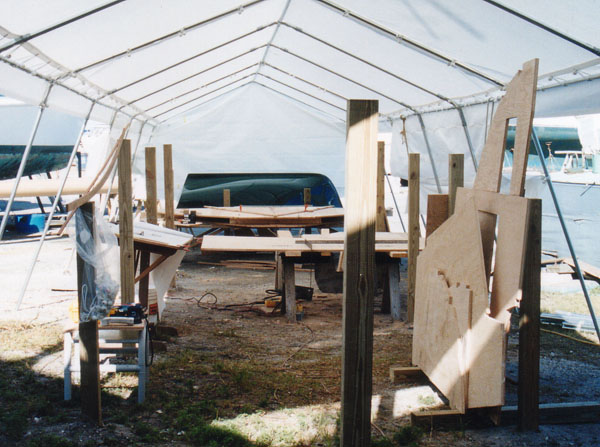 Posts are set in concrete for mounting the bulkheads |
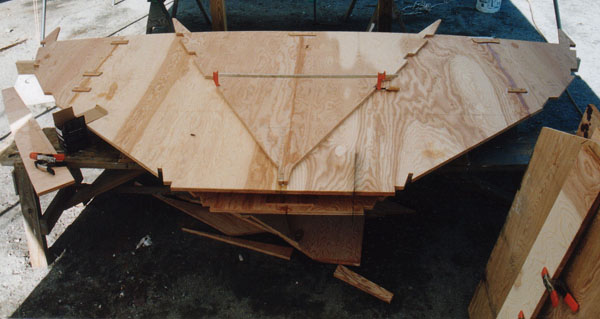 Bulkheads glued in sections with notches for longitudinals, etc (forward molds) Note the width of the flat-bottom hollow box keel |
 The lowest portion of the traditional Caravel two-part transom |
 The lower transom seen from the side showing curvature in lamination |
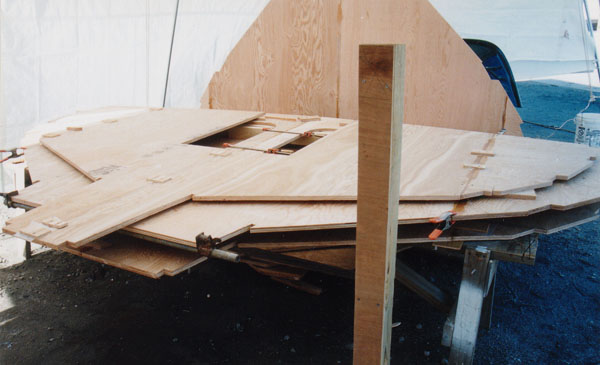 More bulkheads glued up in segments (aft molds) |
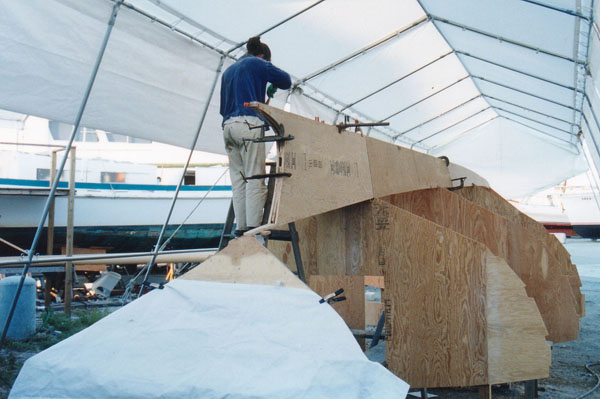 The Bulkheads and Transom are in place and the box keel is being assembled |
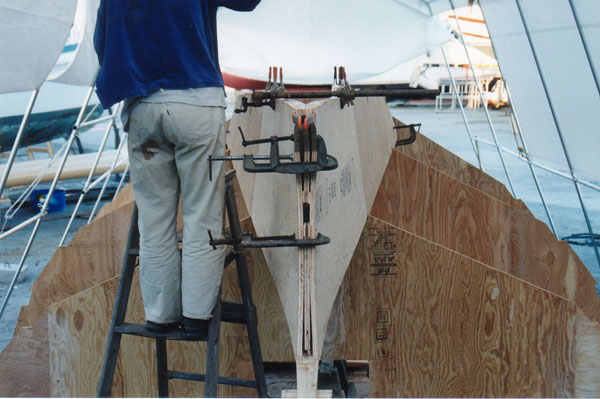 View of the box keel showing prop apperture and 2x2 cleats for the bottom plank |
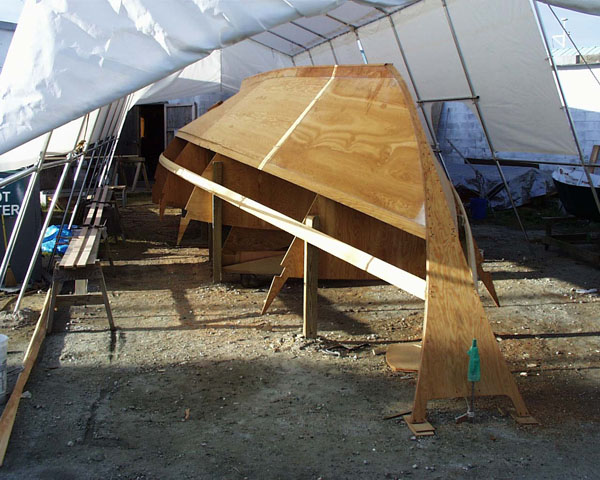 The box keel finished and garboard planks are on--Note the Chinese bow |
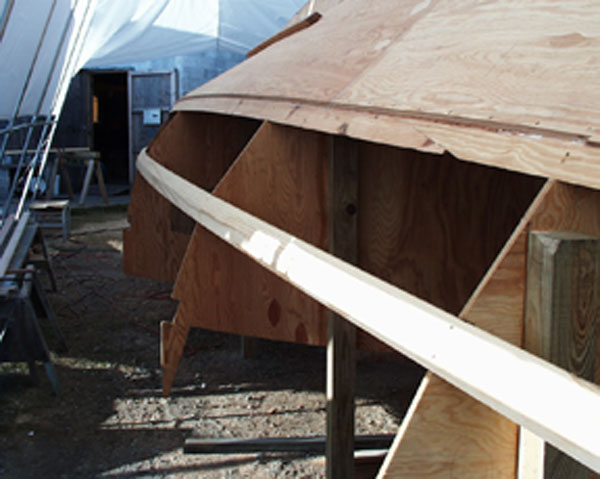 Chine logs are beveled to receive 3/4" ply planking (two lam's below water); Fasteners are pneumatically driven galvanized ring-shank nails |
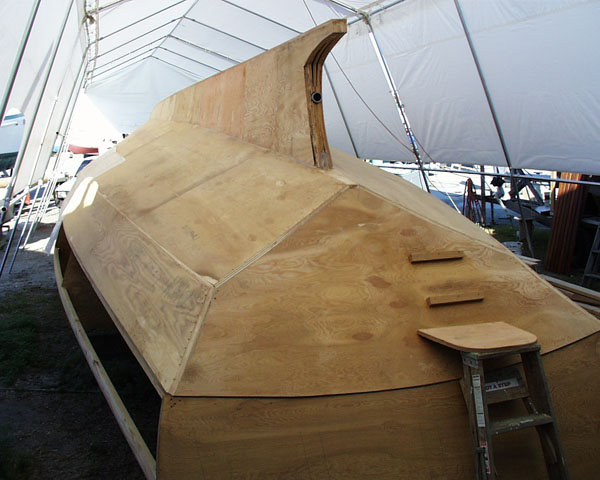 Middle planks are on |
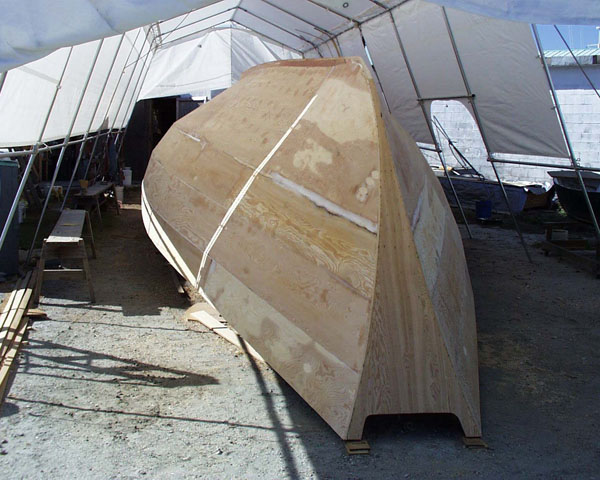 Sheer strakes are on and the Bulwark planks are on |
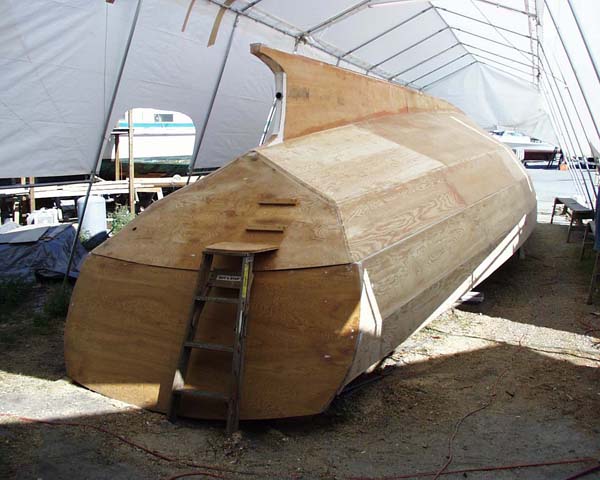 View from astern |
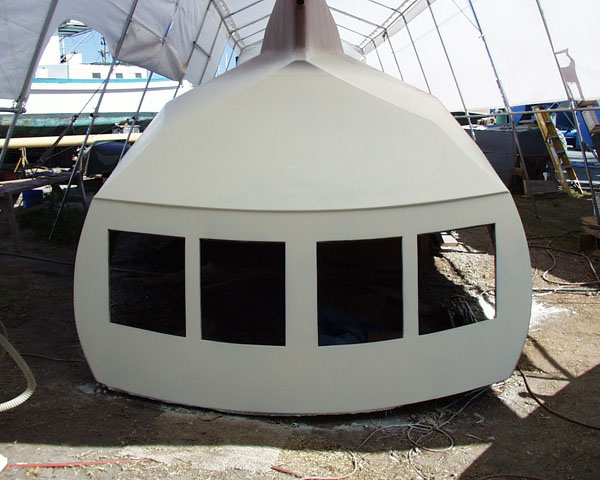 Stern gallery windows cut out; Hull in primer |
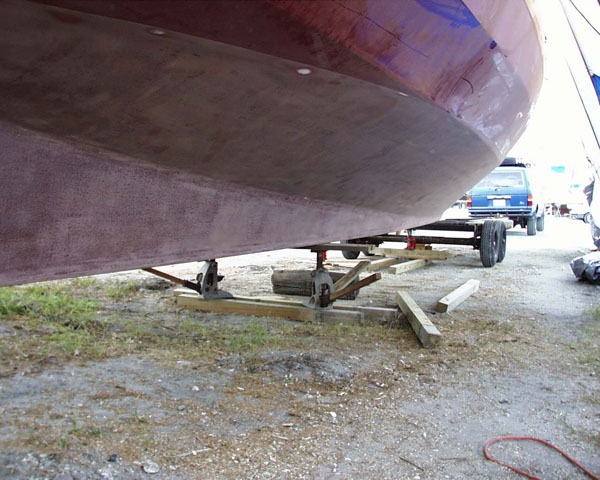 The hull right-side-up |
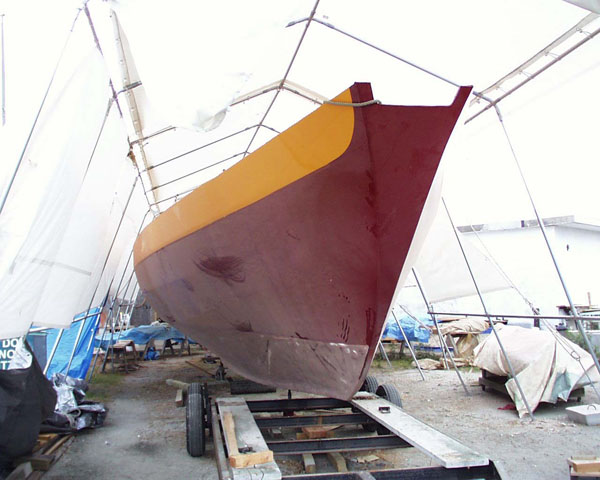 Back in the tent; Pulling the trailer out from under the hull; Paint job not good, was re-painted |
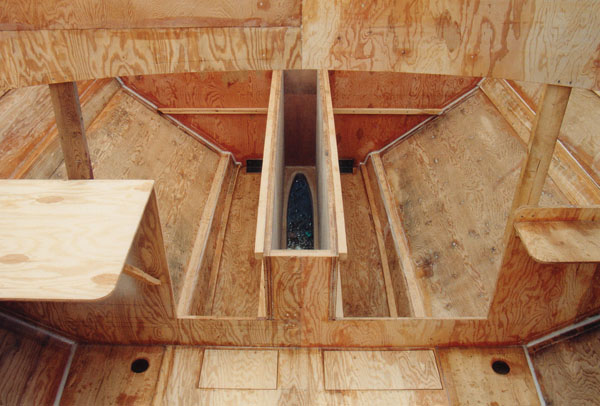 Inside showing Retracting Keel Trunk, integral water tanks, etc The panels (foreground) are for the fresh-water-pump and wine cellar The platforms are for the galley furniture |
 Steel angles reinforce the hull/bulkhead joints adjacent to the 3,500lb Retracting Keel Trunk |
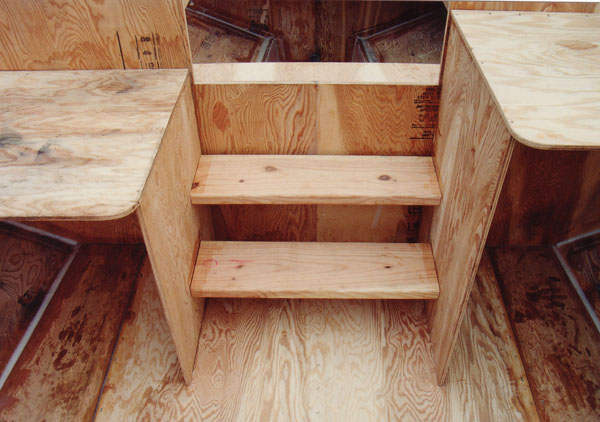 Companionway steps from center cockpit into the main saloon; Integral 220gal fuel tank below |
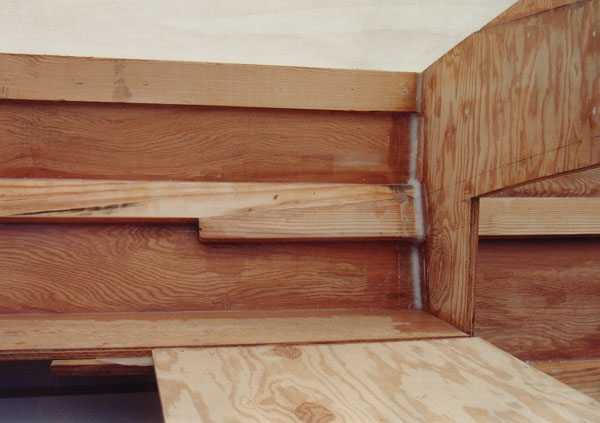 Joint for chine logs; glass-tape over Bulkhead fillets, Sheer Clamp, Countertop, etc |
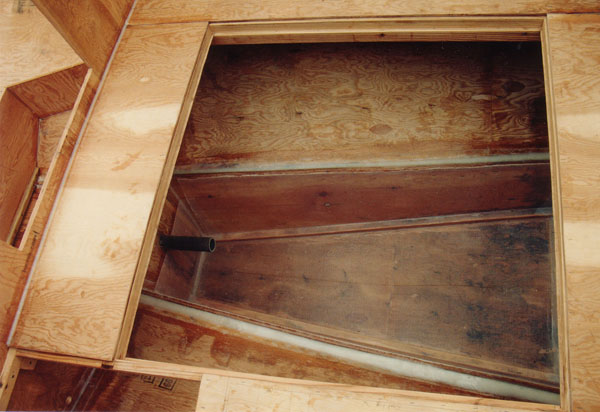 Engine Room under insulated foam-core cockpit well, Shaft Log to left |
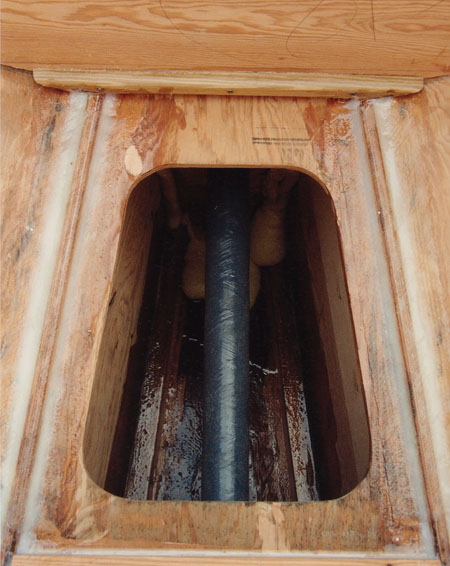 The Holding Tank with Shaft Log running through it; Compartment aft was foam-filled |
 The Hollow Box Keel aft of the holding tank was carefully sealed with epoxy and plywood covered before being filled with poured-in-place 4lb polyurethane closed-cell foam |
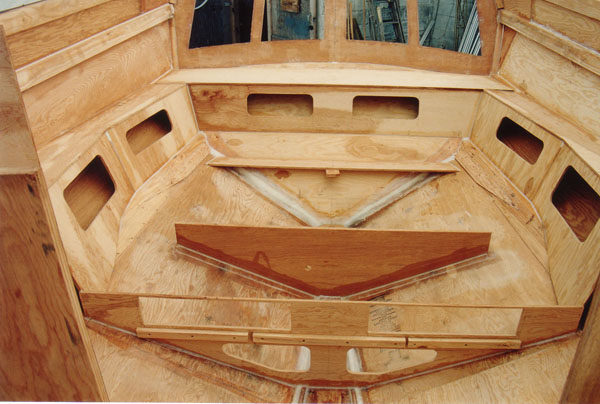 The aft cabin being roughed in |
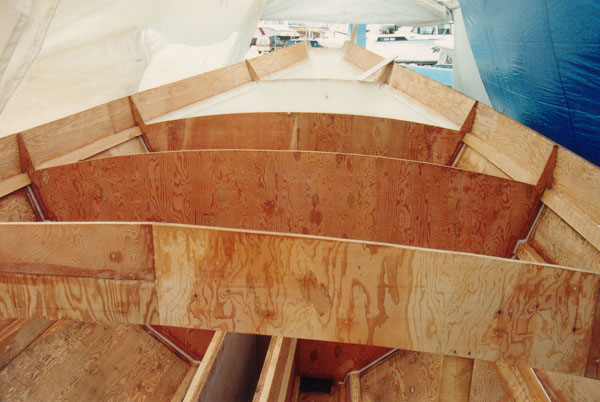 View forward showing bulkhead extensions supporting Bulwark planks |
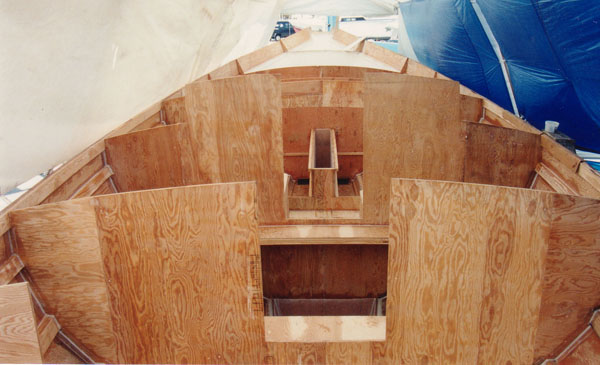 View from Center Cockpit into Saloon showing Keel Trunk |
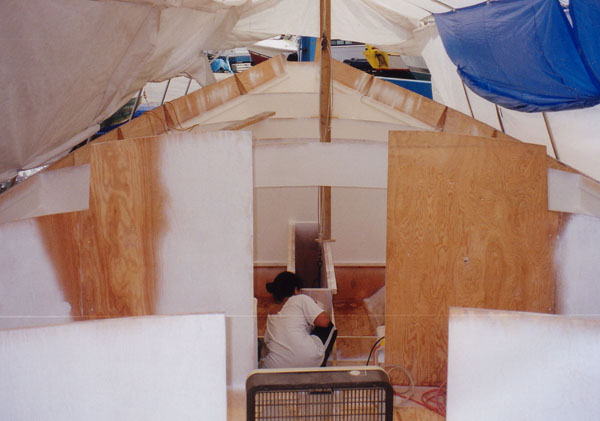 Applying epoxy primer |
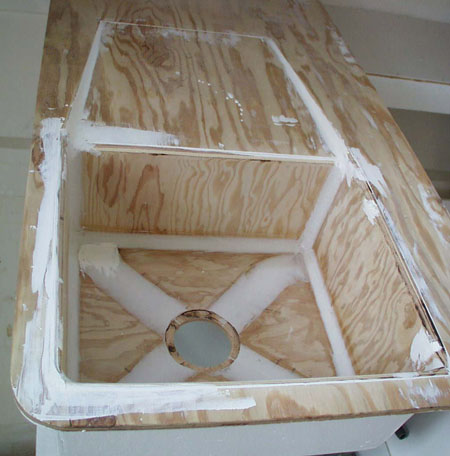 The Galley Sink and Drain Board under construction |
 Delfine using a trim router |
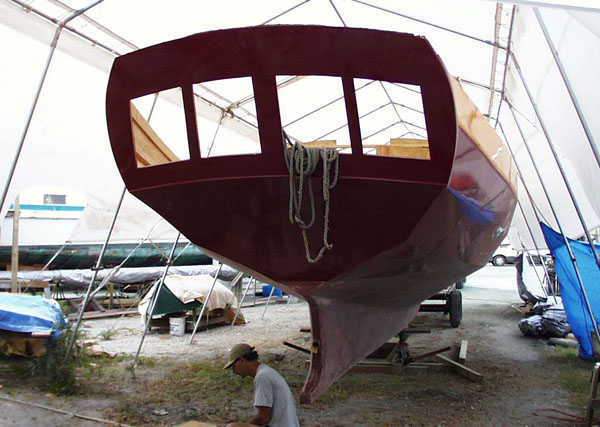 Stern view showing Aft Cabin Gallery Windows; Bill Smith below |
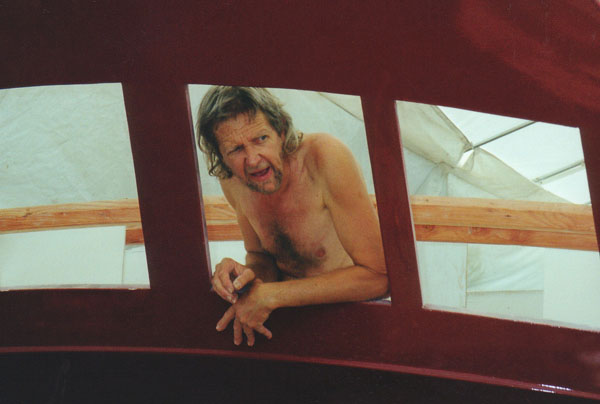 Captain Parker looks grouchy!
|
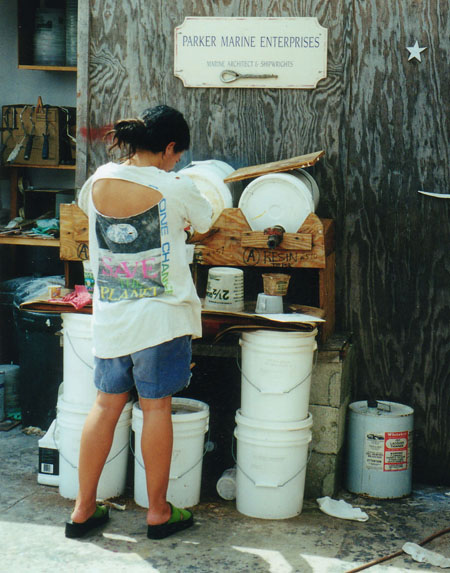 The Epoxy-mixing station; Delfine mixing Shell Epon epoxy |
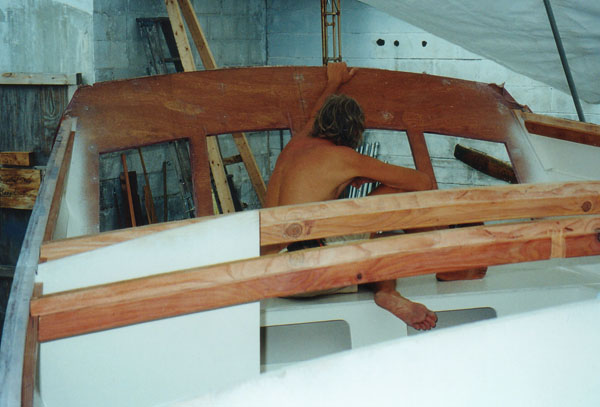 Deck beams starting to go in |
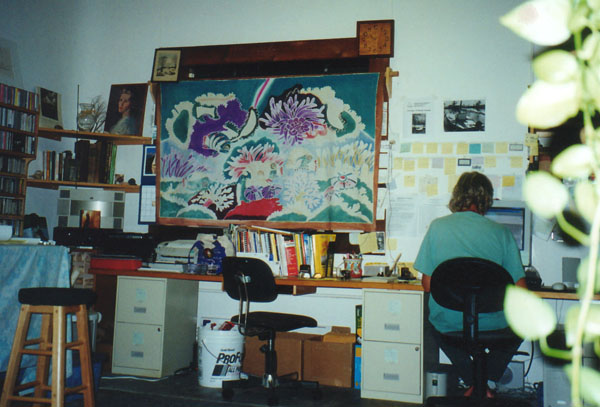 The Parker Marine office in Riverside's old icehouse; Sticky Notes Rule! |
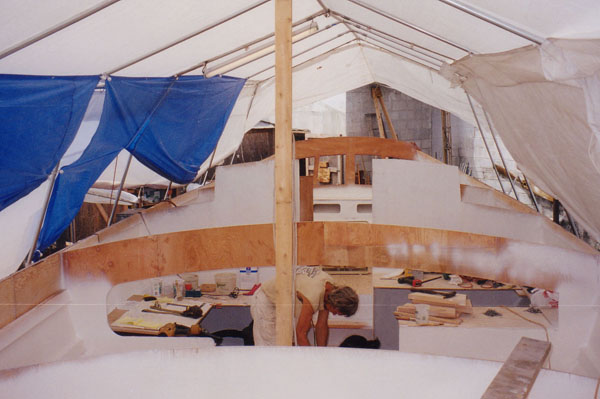 Working in the Main Saloon; View aft from the Cargo Hold |
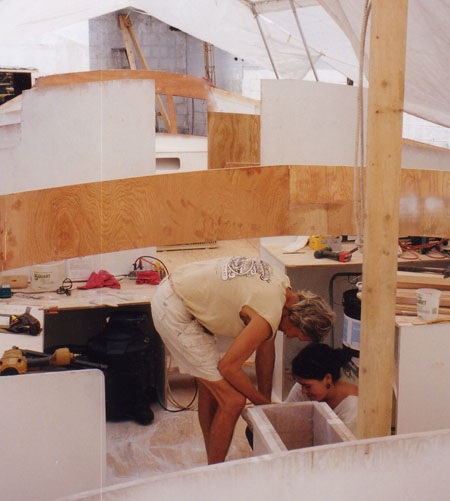 Reuel & Delfine working in the Main Saloon |
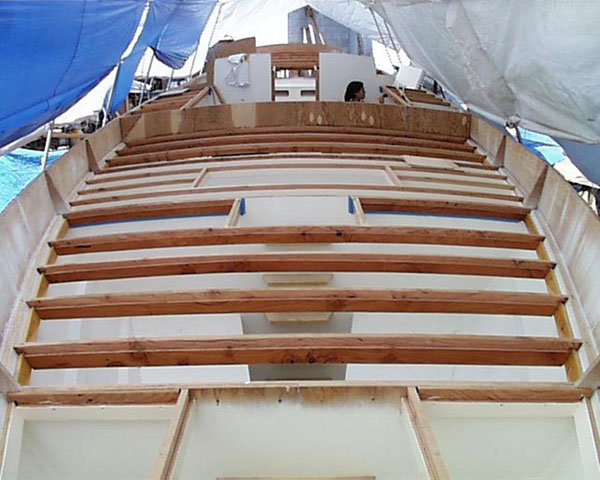 Deck Beams & Hatch Carlins going in--Note the rabbets for headliners & foam cores The break in the deck steps up at the Main Saloon |
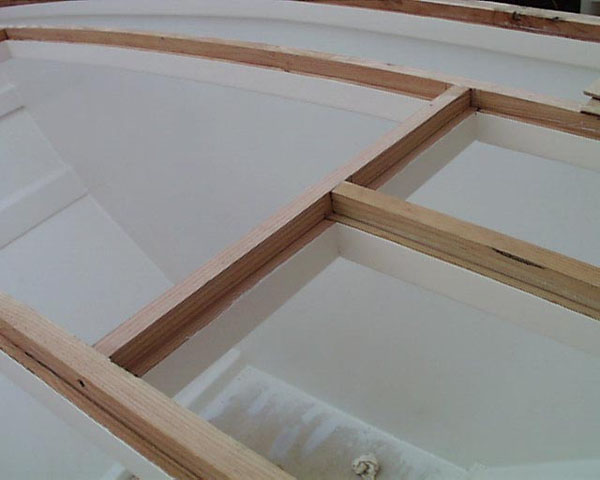 Deck Frame for the Cargo Hold |
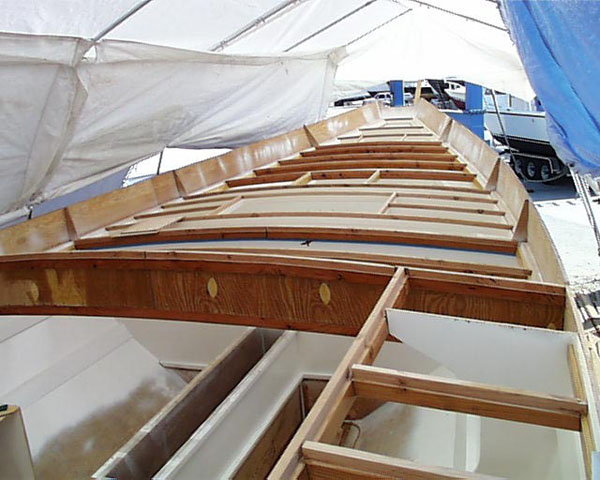 Deck Frame looking forward |
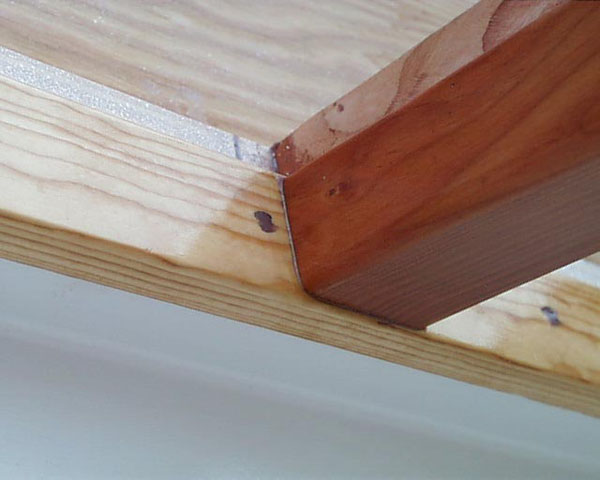 Detail: Deck Beam to Sheer Clamp inner laminate |
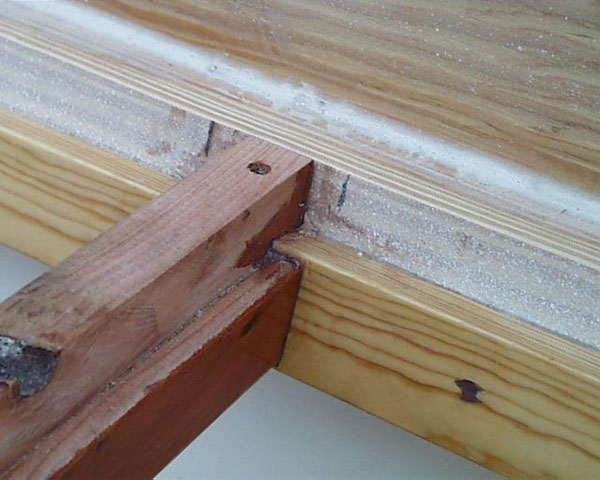 The same view from above |
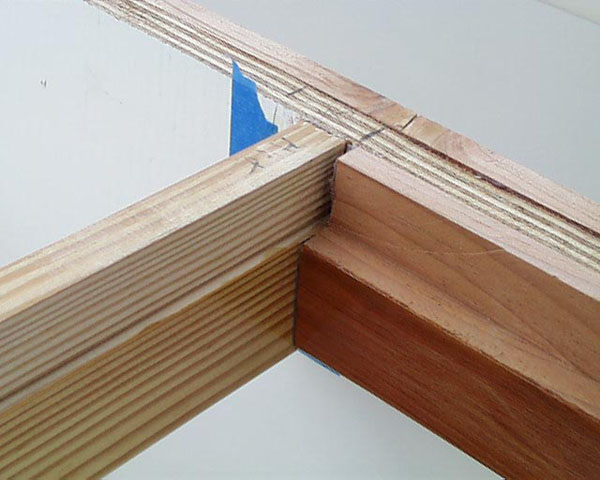 Hatch Carlin to Bulkhead Cleat Beam Detail |
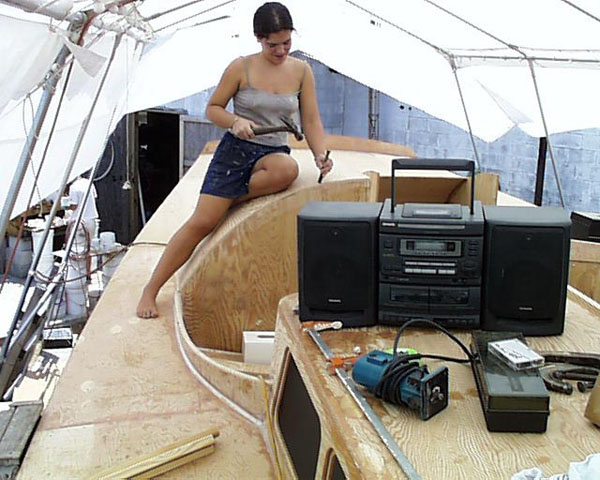 Delfine is countersinking staples in the Head Compartment Roof; Cockpit Coamings are finished and the Cabin Trunks are finished; Coachroof is on, Decks are laid |
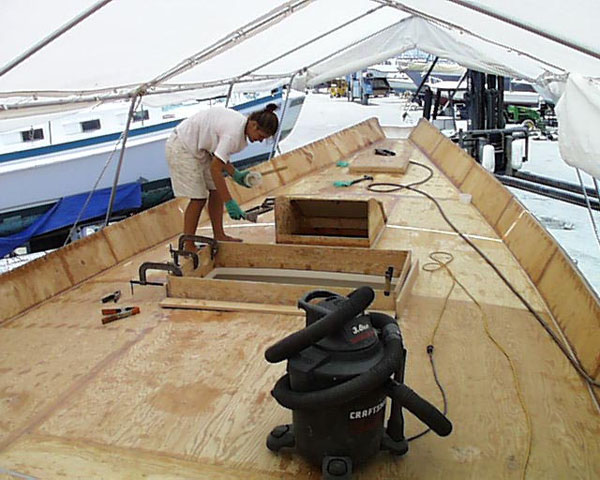 View showing Lucy Trindar working on the Cargo Hatch Coamings & Foc's'le Booby Hatch |
 The inner plank components of the hollow A-frame Bulwarks are going on |
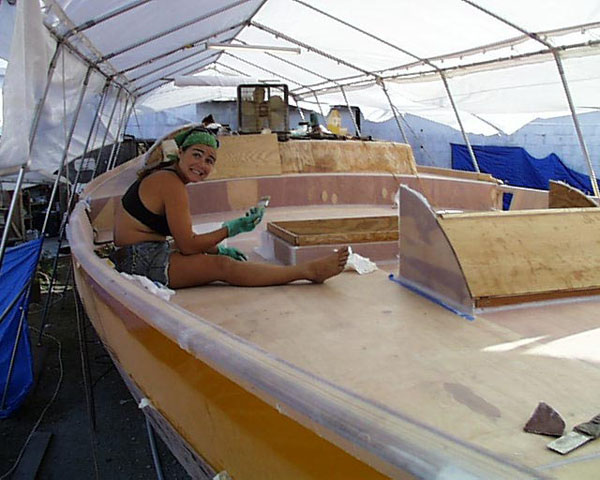 Davina grinning at the camera man--Xynole-polyester fabric & epoxy going over all exterior surfaces |
 Lucy grinning at Davina |
 Fabric/epoxy--Center Cockpit Coamings and Cabin centered |
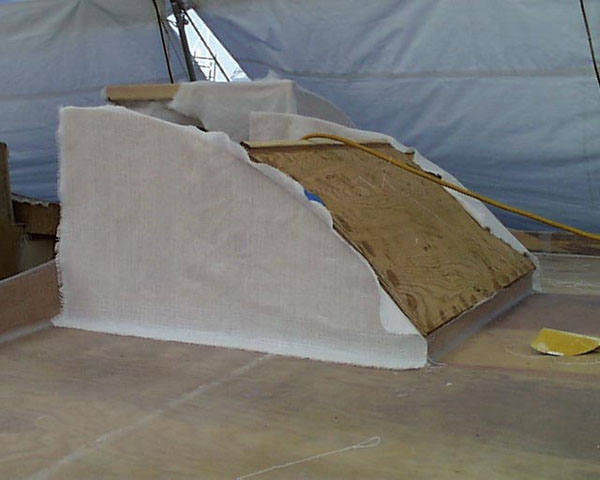 The Booby Hatch to the Aft Cabin gettin Xynole & epoxy |
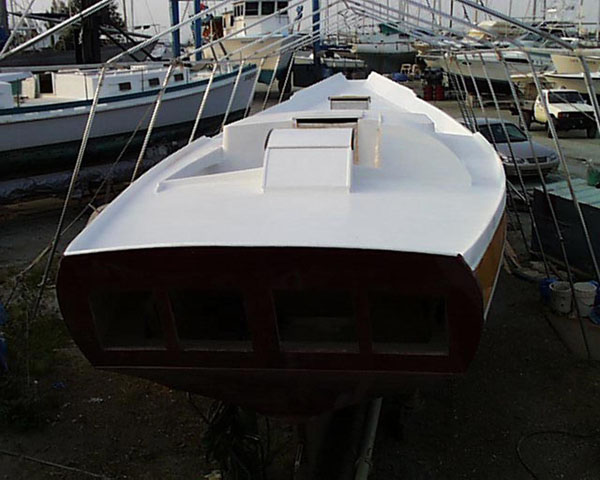 All exterior fabric covering is complete, and epoxy primer has been applied over all |
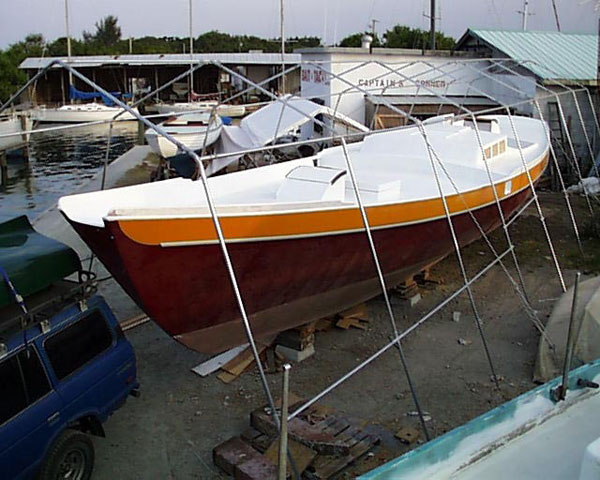 View from the port bow. I repainted the yellow because I didn't like the color |
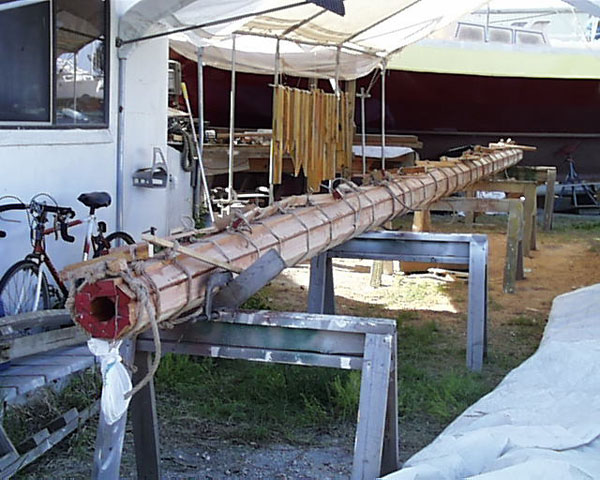 The Douglas fir mainmast being laminated, using the Herreschoff "Bird's Mouth" method |
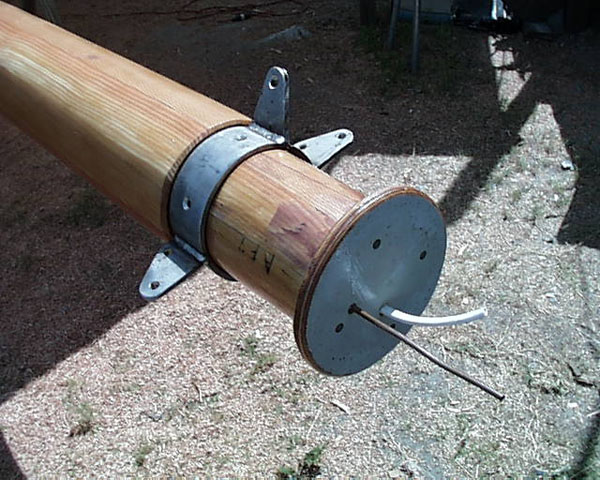 Masthead showing lightning ground and wire for light; The mast collar is for a Junk Mains'l |
 Mainmast shaped and epoxy sealed |
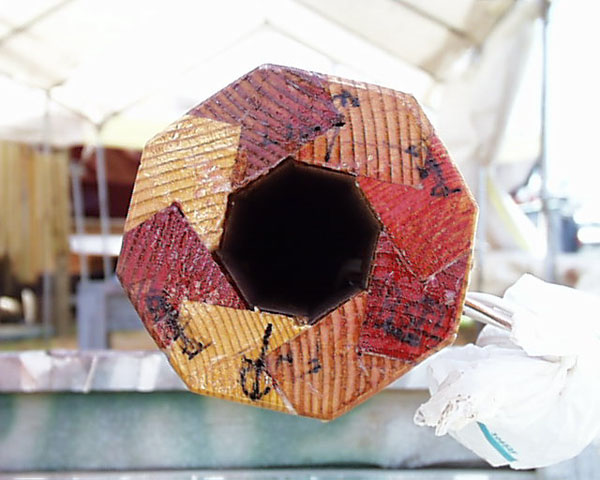 The Bird's Mouth mast lamination uses octagonal 8-wall sections with 45-degree cuts on one side. The locking joint thus created is very strong, providing large gluing surfaces, a mechanical joint, and thinner wall sections |
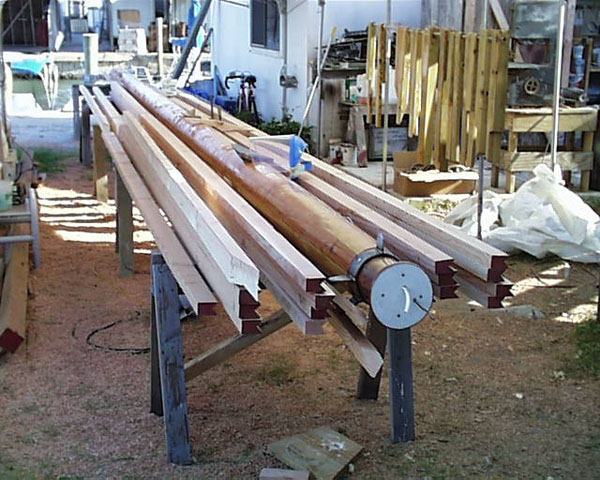 Shown are stacks of mast segments ready to be scarfed and laminated for two more masts |
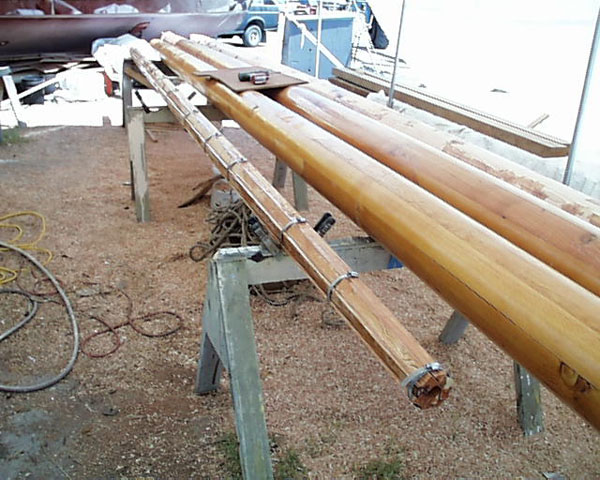 The main boom and main yard are also laminated using the Bird's Mouth method |
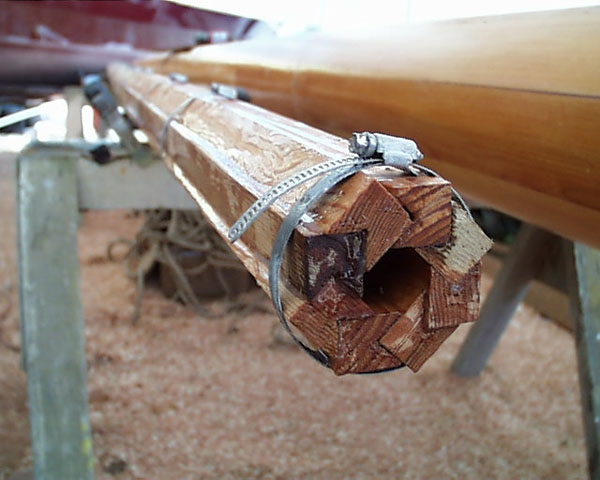 Closeup of the main yard showing the use of large hose clamps in lamination |
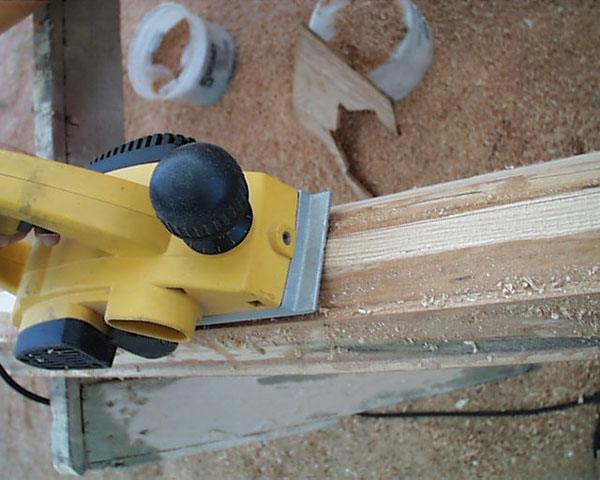 Using a hand-held power plane to rough-shape spars |
 Hose clamps are tightened (and loosened) with a battery-powered drill motor |
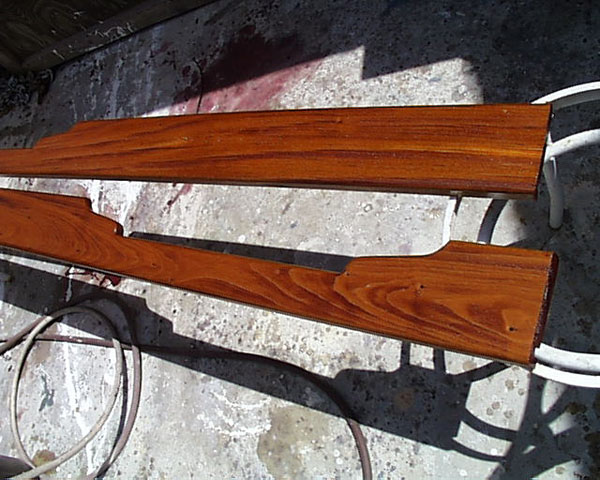 Mahogany bunk boards (and all trim) are epoxy-sealed & pre-finished with sprayed varnish prior to final installation |
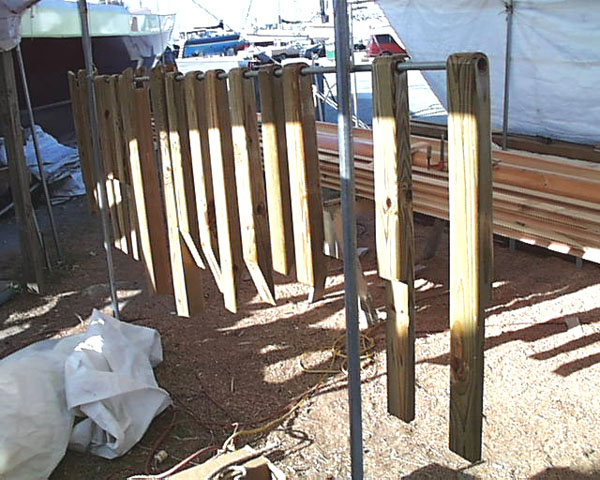 "Miami teak" (Wolmanized pine) lifeline stanchions being oil-soaked prior to installation |
 T'IEN HOU's solid bronze windlass, from Lunenburg Foundries in Nova Scotia |
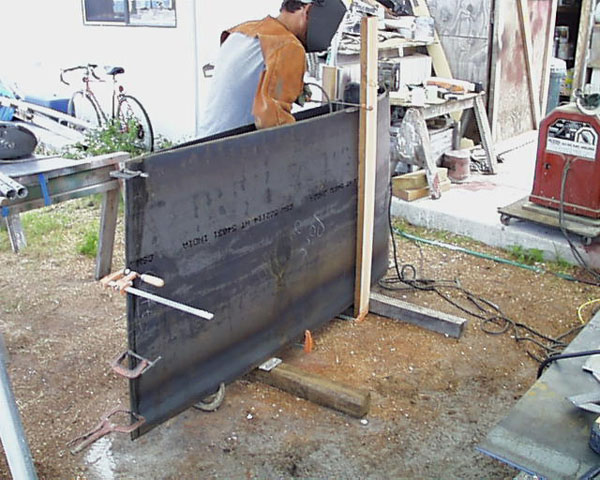 Bill Smith welding the Naca 0009 foil-shaped fin portion of the retracting wing-keel |
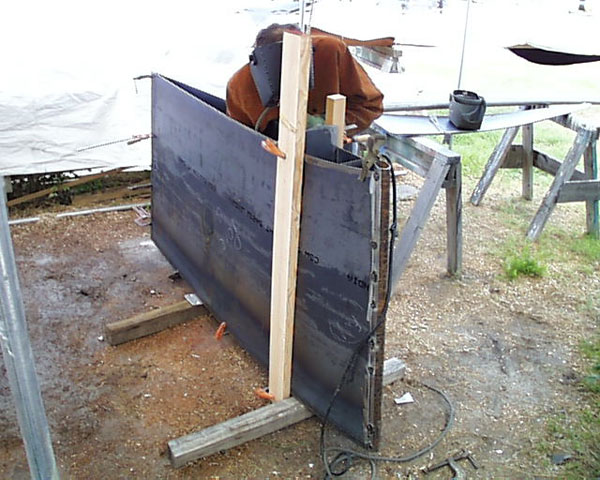 Bill Smith welding the Naca 0009 foil-shaped fin portion of the retracting wing-keel |
 The delta-wing portion of the keel being added to the fin |
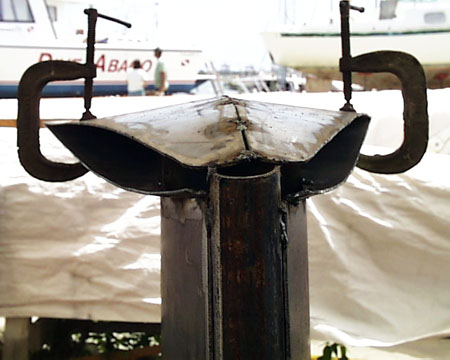 Close-up view showing the pipe leading edge and foil shaped delta wings |
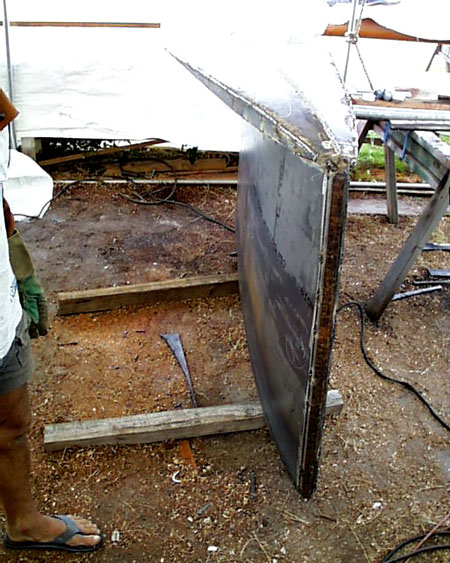 The delta-wing sides are being welded on |
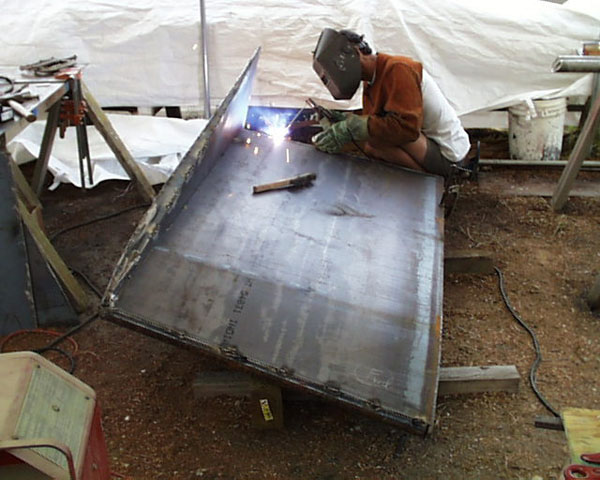 Bill is welding the trailing edge closed--tricky work |
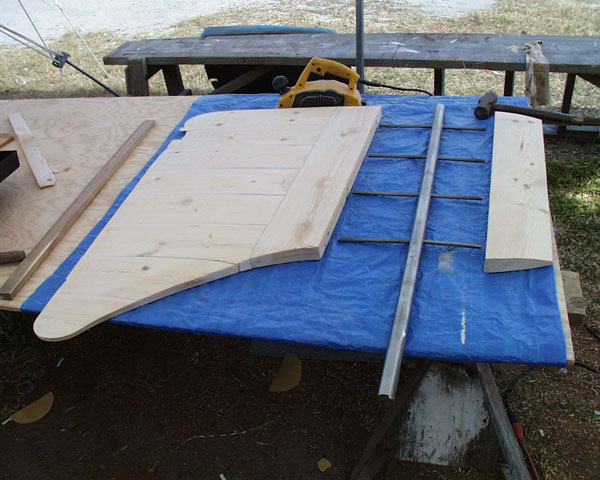 Rudder Core components before assembly |
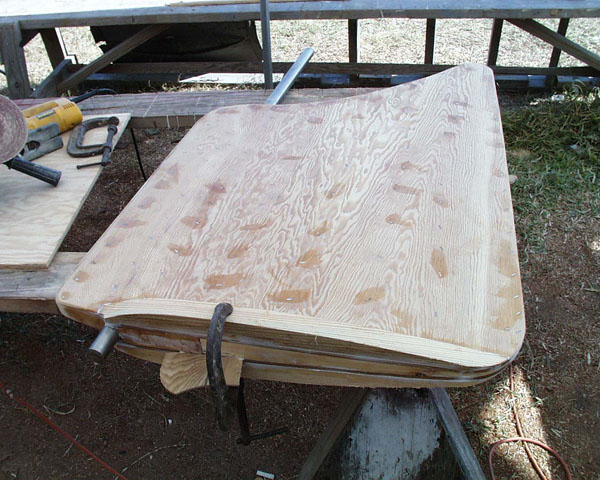 The core has been assembled; plywood skins laminated over; and the endplate is being laminated |
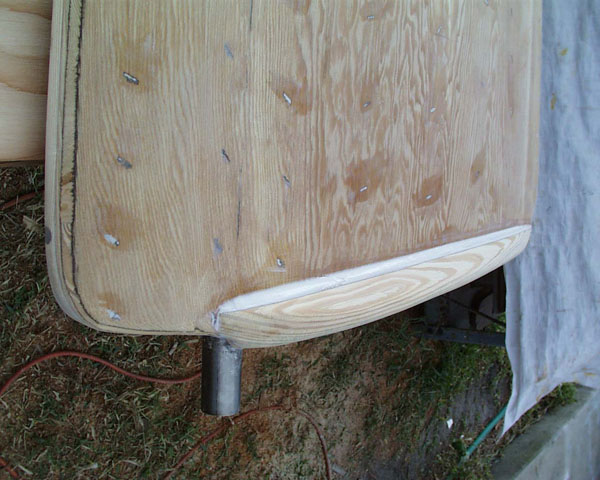 The endplate is sculpted, filleted and ready for Xynole/epoxy |
 Rudder installed in hull; Gudgeon being made (the cut-off wedge allows rudder removal) |
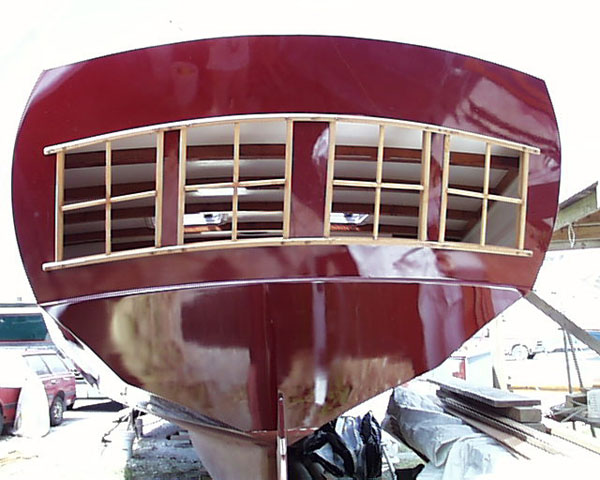 The gallery window teak trim being installed--the red paint is Dupont Industrial Imron |
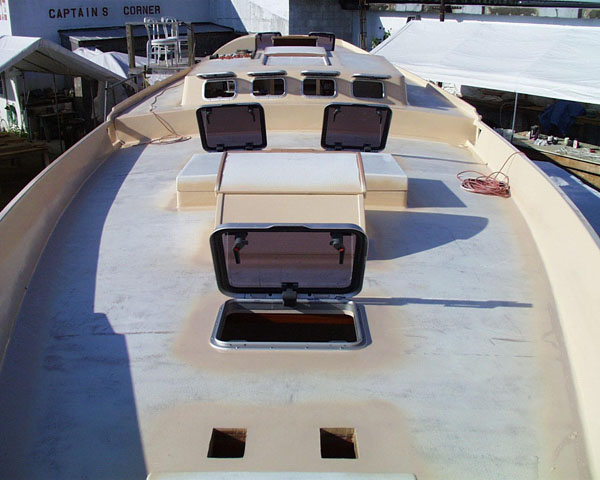 Deck perimeters have been sprayed with buff LP; Ready for non-skid |
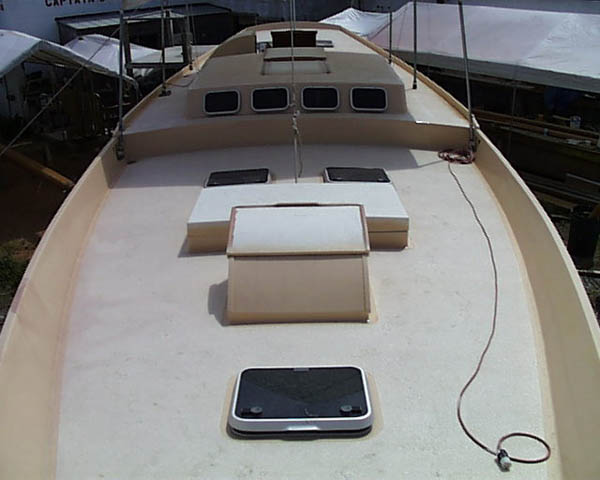 Nonskid applied (sand-blasting sand sprinkled in wet epoxy primer, LP overcoated) |
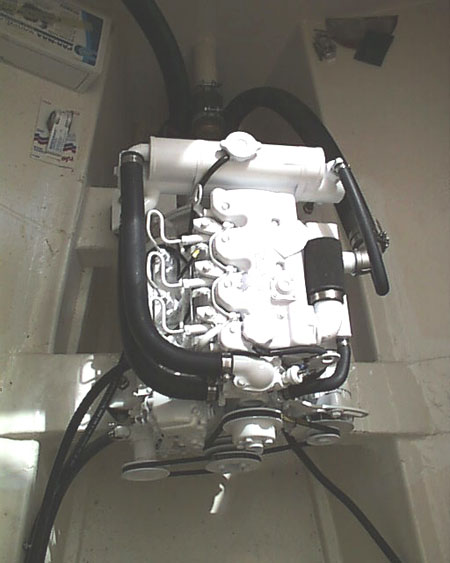 The Isuzu 3LD2 (38hp) diesel installed; It proved to be inadequate and was replaced with a Yanmar 4JH4 (54hp) |
 The helm station, with 36" destroyer wheel |
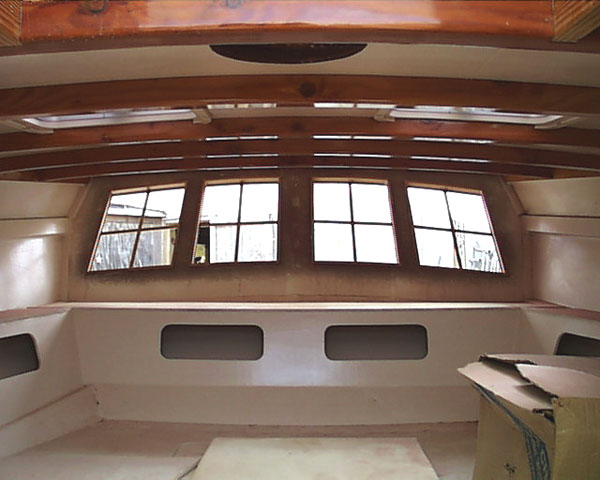 The aft cabin & Gallery Windows from inside before trim |
 The steering machinery platform with rudder shaft & gear ready for installation |
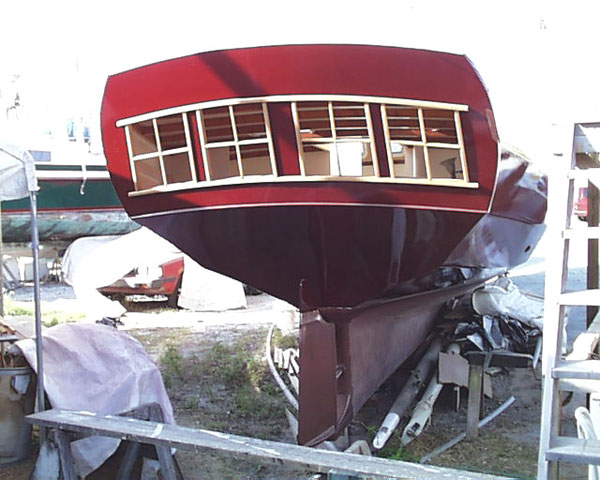 The Gallery Windows |
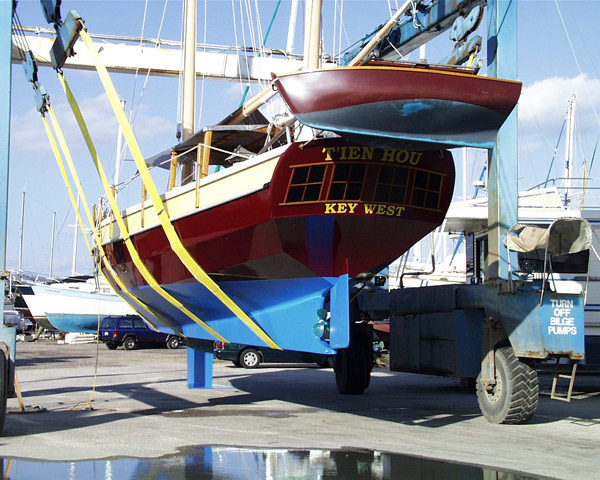 T'IEN HOU in the slings about to be launched; Wing Keel in down position; Abaco Dinghy in davits |
 View from forward showing kayak 2nd tender; Yachtsman anchor catted & fished |
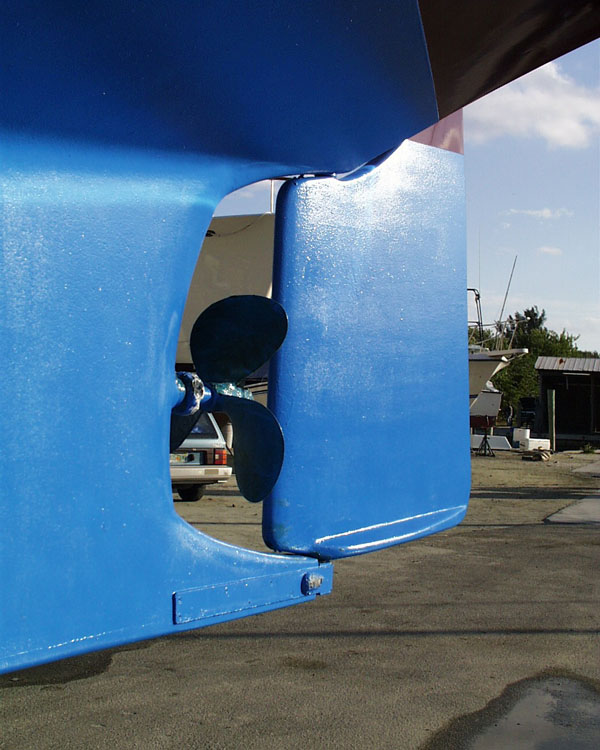 Prop apperture & rudder, showing sculpted end-plate & counterbalance |
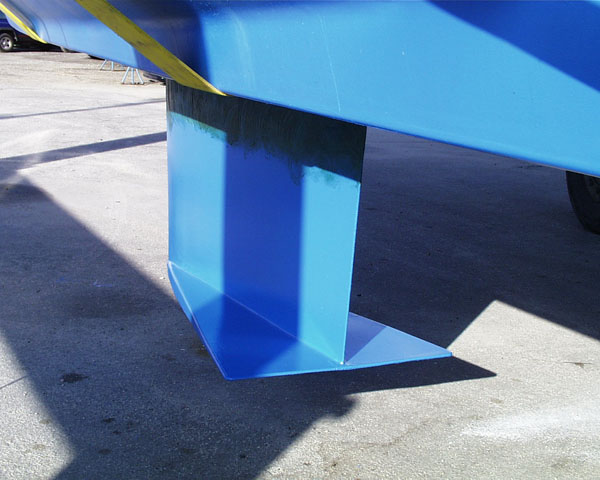 The retracting Wing Keel in the down position; It weighs 3,500lbs and provides self-righting to a nearly inverted position; It is lifted by twin Warn ATV cable winches |
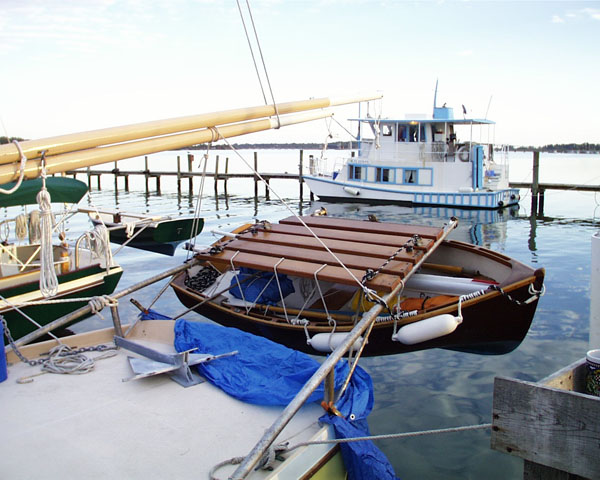 The Abaco Dinghy (sponging skiff) in the stern davits |
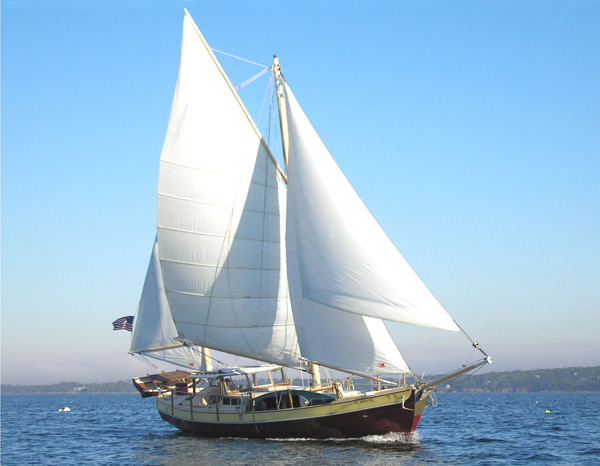 T'IEN HOU sailing in Maine, showing off her ketch rig |